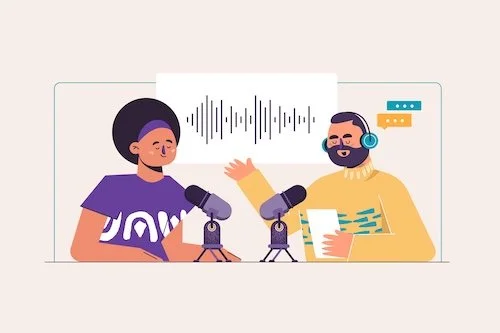Solo talks, fireside chats, panels, oh my! Once you make the commitment to elevating your voice, it can be easy to know generally which topics you’d like to speak to and events you’d like to attend. But what about format? How do you know what kind of talk will be best to highlight your messaging?
As you start to think about what makes sense for you, here are a few tips on how to choose the right speaking format.
What speaking formats are there?
Every conference and speaking opportunity is different, but it’s important to know what your options are. Below is a list of different formats you will likely run into across speaking events.
Keynotes & Solo Talks: A keynote or solo talk is exactly that: a presentation with only you on stage. Often, this style of speaking is more formal and likely requires a slide deck.
Fireside Chats: A fireside chat is a conversation between a moderator and 1-2 speakers. The conversation follows an interview-style format and gives the speakers a platform to dive deeper into their expertise.
Panels: A panel is a discussion among a small group of people, led by a moderator. Typically, you’ll have 2-4 presenters on stage offering industry insights that connect to the overall theme of the topic. There is often audience Q&A as well (check out these tips on how to encourage audience participation!)
Roundtables & Workshops: A roundtable or workshop is an interactive session where the speaker(s) connect directly with attendees. The topic includes actionable takeaways and will allow for more discussion-based questions.
What should I look for?
When you start to get out speaking, it’s important to decide what formats will work for you. Conferences don’t always give you the option to choose, which means deciding in advance can sometimes help you discover if the speaking opportunity is right for you. Here are a few things to consider when deciding what formats to go after.
Topic: First and foremost, consider your messaging and how you’d like it to come across on stage. For example, if you are interested in sharing high-level industry insights and like to hear from others in a similar industry, then a panel could be great for you. If you have a lot of information that is more digestible with slides, then a solo talk might be a better choice.
Sharing the stage: Ask yourself if you are comfortable speaking with or without other speakers on stage with you. If standing on stage by yourself seems intimidating, a great introduction to speaking can be participating on panels or fireside chats with other people where you can equally share the spotlight.
Timing: Timing is everything! Every conference does it differently, so it’s important to decide beforehand how long you’d be comfortable with being on stage. A solo talk could be a 5-minute lightning talk, which may not be enough time for you to get your point across. It can also be an hour, which might be way too long for you. TIP! Look for the sweet spot. A solo talk that is ~25 minutes is a great time to avoid on-stage burnout, and a ~45 minute panel is plenty of time to get your point across while splitting the time with fellow panelists.
Slide Decks: Building a slide deck can be complicated and time consuming, but it can also be a great way to present your information to a crowd. Slides are often required for any speaker doing a solo talk, so ensure that is a realistic undertaking before committing to that kind of presentation.
Finally, don’t be afraid to try something new! The best part about speaking is that each opportunity is a building block. The more you speak, the more experience you get, the more you know what you like, and the more fun you have.
If you are ready to get out speaking, get in touch! We would love to help you identify what best opportunities are out there for you. And if you want to stay updated on industry trends like this, make sure to sign up for our newsletter.




